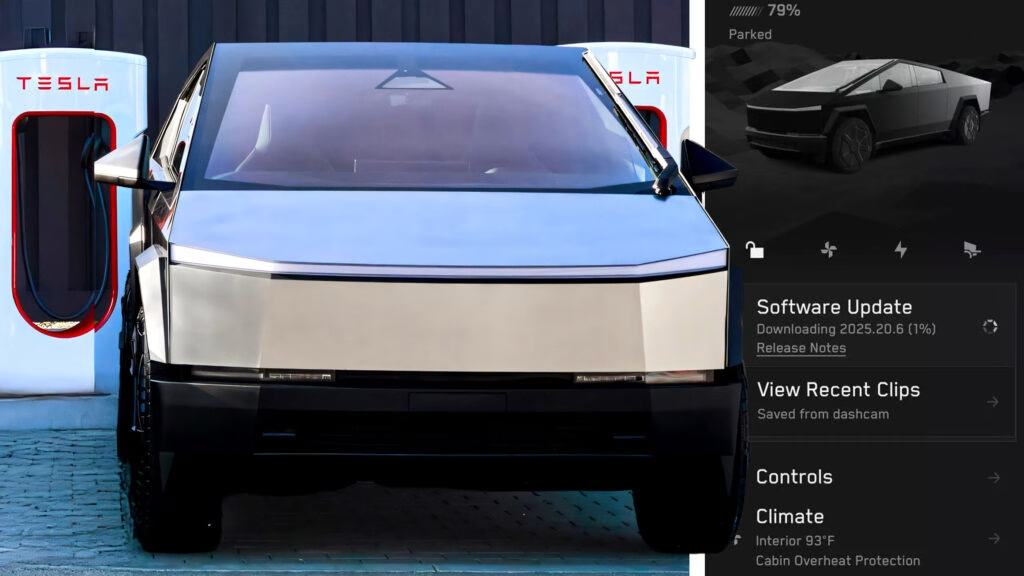Why Did a Plugged-In Tesla Cybertruck Die While Its Owner Was Away?
Picture this: you come back from a two-week vacation, ready to hit the road, only to find your Tesla Cybertruck completely lifeless—even though it’s been plugged in the whole time. That’s exactly what happened to AJ Esguerra in Arizona. The truck, a six-figure investment, was supposed to be safe and sound, sipping electricity while parked. Instead, it was dead as a doornail.
Naturally, AJ’s first thought was the brutal Arizona heat. With record-breaking temperatures and the truck sitting idle, maybe something had overheated or the battery had suffered a slow, silent drain. But the real answer turned out to be more surprising—and a lot less scary for other EV owners.
What Actually Caused the Cybertruck to Fail?
After posting his predicament in a Cybertruck owner’s group, AJ got a mix of sympathy and not-so-helpful jokes. Some folks suggested the worst—total battery failure or even writing the truck off as a loss. But others pointed him in the right direction: call Tesla service.
Tesla’s response was quick. Within hours, technicians arrived, jump-started the truck, and towed it to a service center for a deeper look. The culprit? A failed power converter. This component is crucial for managing the flow of electricity between the charger and the truck’s battery. When it fails, the truck can’t charge—even if it’s plugged in.
Importantly, Tesla confirmed that neither the heat nor the act of leaving the truck plugged in was to blame. The power converter simply gave out, and Tesla covered the repair under warranty. No finger-pointing, no runaround—just a straightforward fix.
Is It Safe to Leave an EV Plugged In for Weeks?
This story raises a question a lot of EV owners have: Is it really okay to leave your electric vehicle plugged in for days or even weeks on end? According to Tesla’s own technicians, the answer is yes. In fact, they recommend it.
Here’s why: modern EVs, including the Cybertruck, are designed to manage their own charging cycles. Once the battery is full, the system stops drawing power. Tesla even mentioned that many “snowbird” owners leave their trucks plugged in for months while away, with no issues. The key is that the charging system is smart enough to prevent overcharging or unnecessary battery wear.
Still, it’s worth noting that rare component failures—like AJ’s power converter—can happen in any vehicle, electric or gas-powered. But statistically, such failures are uncommon. According to a 2023 study by J.D. Power, over 90% of EV owners report no major charging issues in the first three years of ownership.
What Should You Do If Your EV Won’t Start After a Trip?
If you ever return to a dead EV, don’t panic. First, check your charging setup and app for any error messages. Sometimes, a simple reset or unplug-replug can do the trick. If that doesn’t work, reach out to your manufacturer’s service team. Most major brands, including Tesla, offer roadside assistance and can diagnose issues remotely.
It’s also a good idea to keep your EV’s software up to date. Automakers frequently release updates that improve charging reliability and battery management. And if you’re leaving your car for an extended period, make sure your home charging setup is in good condition—no frayed cables or tripped breakers.
How Does Tesla’s Service Stack Up in Real Life?
AJ’s experience is a textbook example of how EV service should work. Fast response, transparent communication, and a warranty that actually covers what it promises. While not every service story is this smooth, Tesla has invested heavily in its mobile service fleet and remote diagnostics. According to Consumer Reports’ 2024 reliability survey, Tesla’s service satisfaction has improved year-over-year, especially for newer models like the Cybertruck.
That said, not every automaker handles things this well. Some EV owners have reported delays or confusion when dealing with less-established service networks. It pays to research your brand’s support reputation before buying—and to keep records of your service history in case you ever need to make a warranty claim.
What Can Other EV Owners Learn from This?
The big lesson here isn’t just about the Cybertruck—it’s about understanding how your EV works and what to expect when things go wrong. Even with the best technology, occasional hiccups are part of car ownership. The difference is in how those hiccups get handled.
If you’re heading out of town, don’t stress about leaving your EV plugged in. Modern systems are built for it. But do stay plugged into your owner community—forums and groups are great for troubleshooting and support. And remember, a responsive service team can turn a potential nightmare into a minor inconvenience.
The big takeaway? EV ownership isn’t about perfection—it’s about smarter adjustments. Start with one change this week, and you’ll likely spot the difference by month’s end.

